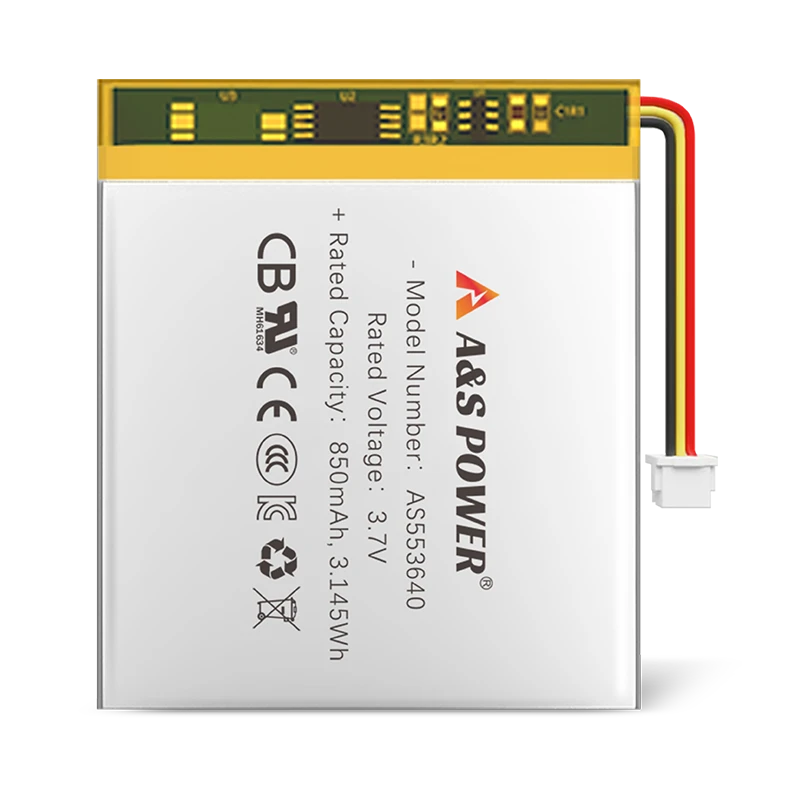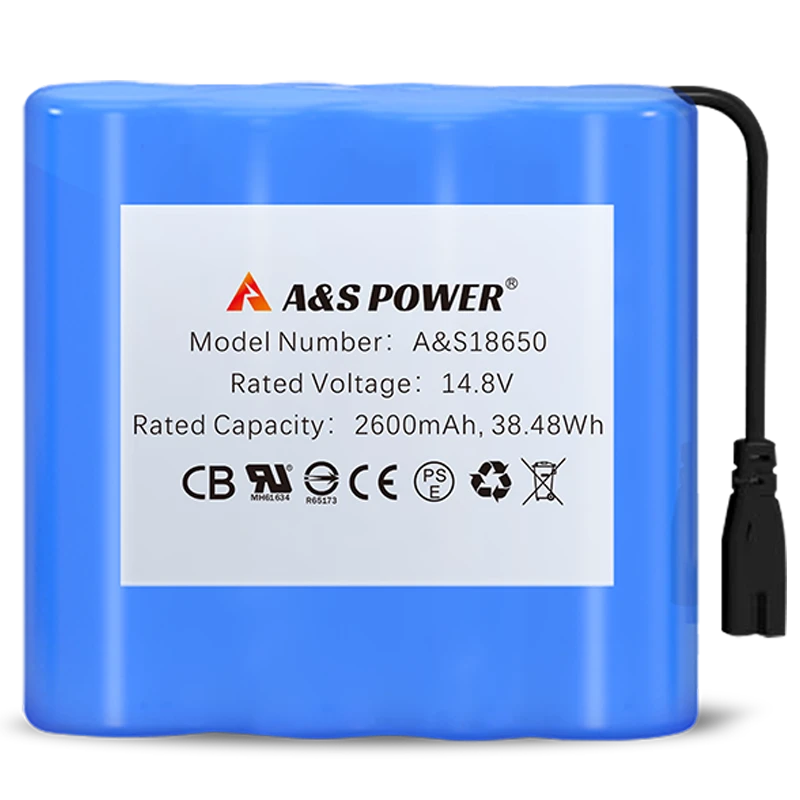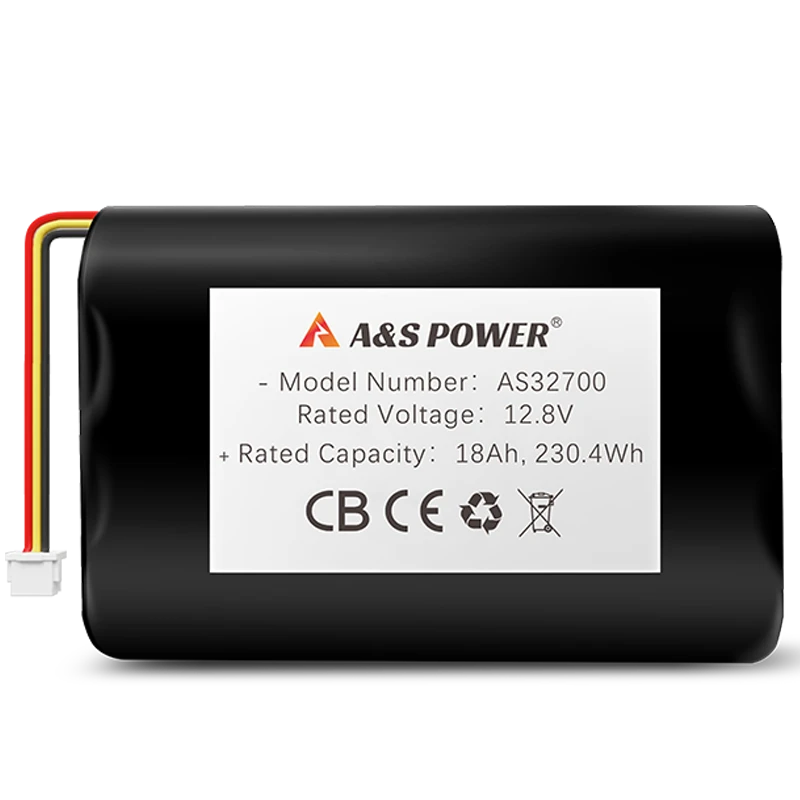Are Lithium-ion or NiMH Battery Packs More Cost Effective
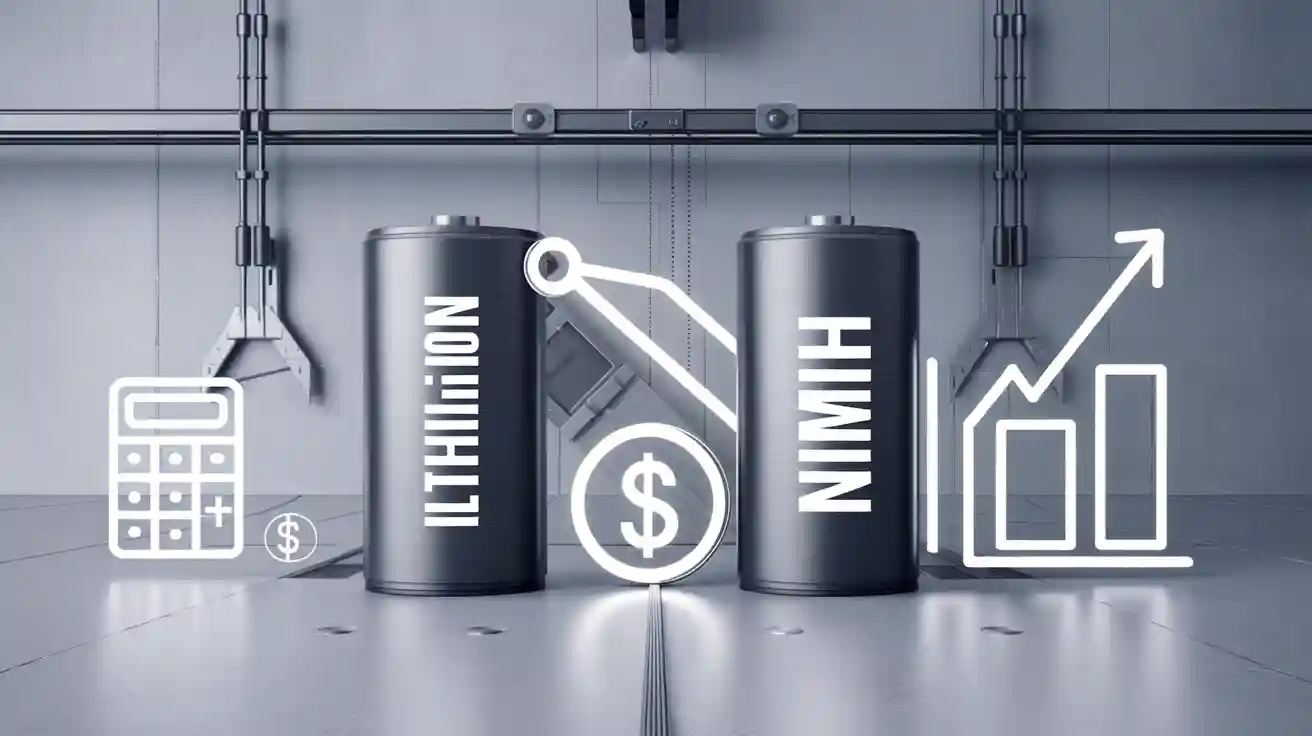
You want to save money when picking rechargeable battery packs. Nimh batteries cost less at first, so they are good if you need something cheap and fast. Lithium-ion batteries last longer and can be used more times, so they might save you money later. In China, lithium-ion batteries are used the most for things like electric cars and robots. Nimh batteries are still important for some older or medium-use jobs. Companies like CATL and BYD make both nimh batteries and lithium-ion batteries for different needs. The best battery for you depends on how you use it and what you want from your battery.
Key Takeaways
- NiMH batteries are cheaper to buy and are very safe. They work well for simple things and if you do not use them often. Lithium-ion batteries cost more at first but last much longer. They can hold more energy, so they save money if you use them a lot. Always use the right charger for each battery type. This keeps the batteries safe and helps them work well. Pick lithium-ion batteries for things you use a lot or need strong power. Choose NiMH batteries if you want something cheap and reliable for many home devices.
Upfront Cost
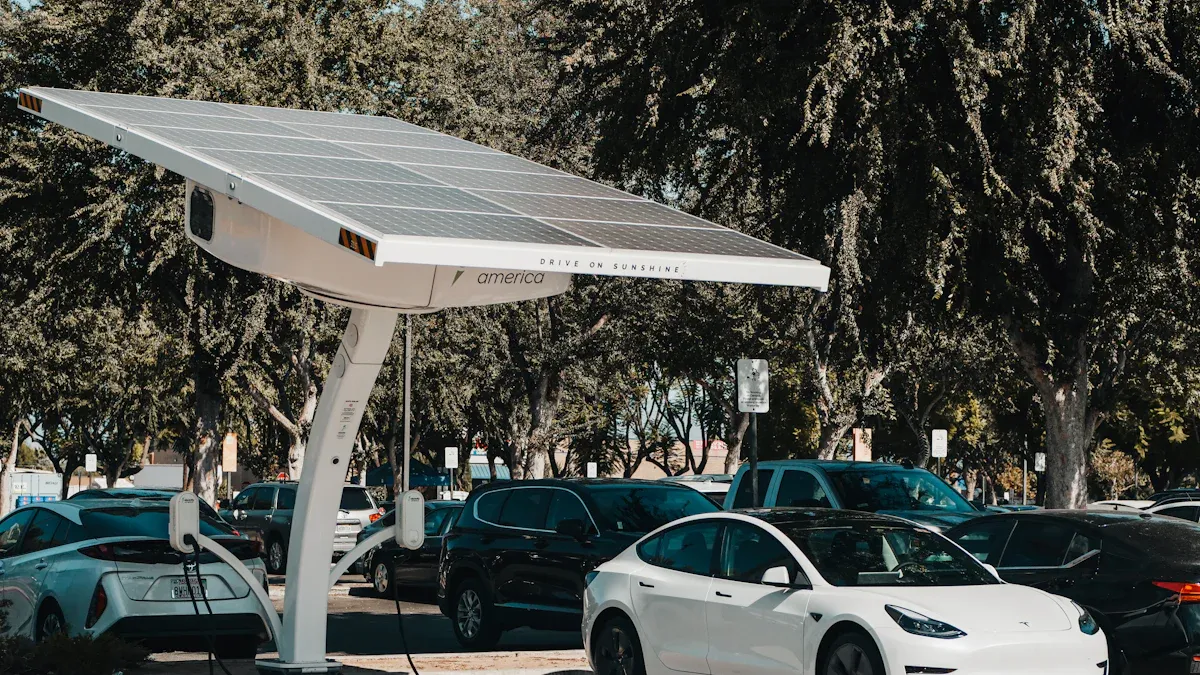
Rechargeable Battery Packs Pricing
When you look at rechargeable battery packs, you see a big price difference. Nimh batteries usually cost about half as much as lithium-ion batteries. This makes nimh batteries a good choice if you want to save money right away. Nimh batteries work well in things like remote controls, toys, and flashlights. You can buy a nimh rechargeable battery pack for much less than a lithium-ion battery pack.
Lithium-ion batteries cost more at first. The price for lithium-ion batteries can be from $9 to $90, depending on what you need. For example, a lithium-ion battery for a smartphone might cost $10 to $35. A laptop battery can cost $20 to $90. These batteries cost more because they use better technology and have more energy. If you want a battery that lasts longer and gives more power, you pay more at the start.
Tip: If you need rechargeable batteries for simple things, nimh batteries are cheaper. For devices that need more power, you may need to spend more on lithium-ion batteries.
Here is a quick comparison of average upfront costs:
| Battery Type | Average Upfront Cost Description |
|---|---|
| NiMH Batteries | About half the cost of lithium-ion; good for low-power devices |
| Lithium-ion Batteries | Usually $9 to $90, depending on the device |
Initial Investment
How much you pay at first depends on the battery type. A nimh starter kit with batteries and a charger usually costs about $20. This kit has what you need to start using nimh batteries. Nimh batteries have a voltage of 1.2V and keep their power steady. You can recharge them many times, which saves money if you use them a lot.
Lithium-ion batteries need more money at the start. These batteries often have built-in voltage regulators and give a steady 1.5V output. You pay more at first, but you get better performance and longer-lasting power. Lithium-ion batteries are best for things like cameras, laptops, and power tools. The higher price is because of their special features and longer life.
| Battery Type | Typical Initial Investment | Key Features and Notes |
|---|---|---|
| NiMH Rechargeable | About $20 for starter kit | Comes with batteries and charger; 1.2V voltage; steady power; can be recharged many times; costs less at first. |
| Lithium-ion Rechargeable | More than NiMH | Has voltage regulator with 1.5V output; costs more at first; steady power and high performance for strong devices; can be recharged and saves money over time. |
You should also think about energy density when looking at cost. Nimh batteries have an energy density of 60–120 Wh/kg. Lithium-ion batteries can have 150–190 Wh/kg for cobalt-based types. This means lithium-ion batteries hold more energy in a smaller, lighter size. Even though you pay more at first, you get more power and longer use from each battery.
| Battery Type | Typical Energy Density (Wh/kg) | Cycle Life (cycles) | Upfront Cost | Cost Impact on Watt-hour |
|---|---|---|---|---|
| NiMH | 60 – 120 | 500 – 1,000 | Lower upfront cost | Higher long-term cost because they do not last as long and need to be replaced more often |
| Lithium-ion (Cobalt-based) | 150 – 190 | 2,000 – 6,000 | Higher upfront cost | Lower long-term cost because they last longer and store more energy |
| Lithium-ion (Manganese) | 100 – 135 | 2,000 – 6,000 | Higher upfront cost | Lower long-term cost because they last longer and store more energy |
| Lithium-ion (Phosphate) | 90 – 120 | 2,000 – 6,000 | Higher upfront cost | Lower long-term cost because they last longer and store more energy |
When you pick between nimh batteries and lithium-ion batteries, think about how much you want to spend now and how you will use your batteries. Nimh batteries help you save money at first, especially for things that do not use much power. Lithium-ion batteries cost more, but they work better and last longer, which can save you money in the long run.
Long-Term Value
Cycle Life: NiMH Batteries vs Lithium-ion
When you look at rechargeable batteries, cycle life is important. Cycle life means how many times you can use and charge a battery before it loses most power. This helps you know how long the battery will last and how much it will cost over time.
NiMH batteries can be used 500 to 1,000 times. If you use them every day, they may last two or three years. How long they last depends on how often you use them and where you keep them. NiMH batteries work best in places that are not too hot or cold. If it is very hot or cold, they do not last as long. If you leave NiMH batteries in a hot car or a cold garage, they will wear out faster.
Lithium-ion batteries last much longer than NiMH batteries. You can use them 2,000 to 6,000 times. Some lithium-ion batteries can last up to 20 years if you take care of them. They also hold more energy in a smaller size. Lithium-ion batteries work in many temperatures, from -40°F to 140°F. They work best between 20°C and 25°C. If it gets hotter than 35°C, they can wear out faster, but they still do better than NiMH batteries. Cooling systems, like those in electric cars, help lithium-ion batteries last even longer.
Here is a table that compares how NiMH batteries and lithium-ion batteries perform:
| Feature | NiMH Batteries | Lithium-ion Batteries |
|---|---|---|
| Cycle Life | 500 – 1,000 cycles | 2,000 – 6,000 cycles |
| Lifespan | 1 – 3 years | Up to 20 years |
| Temperature Range | Best in mild weather; does not do well in very hot or cold places | Works from -40°F to 140°F; best between 20°C and 25°C |
| Self-Discharge | Loses charge faster than lithium-ion; keeps about 80% charge after 3 years | Loses very little charge over many years |
| Energy Density | 60–120 Wh/kg | 150–190 Wh/kg (cobalt-based) |
| Cost Effectiveness | Good if you use and change batteries often | Saves more money over time because it lasts longer |
Note: Lithium-ion batteries last longer and hold more energy. They are better for things you use a lot or for many years.
Replacement Frequency
Replacement frequency means how often you need to buy new rechargeable batteries. This changes how much you spend over time and how much value you get from each battery.
If you use NiMH batteries, you will need to buy new ones more often. They do not last as long, and they wear out faster in hot or cold places. You might need to buy new NiMH batteries every one to three years, especially if you use them in things that use a lot of power. Even though they cost less at first, you spend more over time.
Lithium-ion batteries do not need to be replaced as often. They last longer and work well for many years before you notice they do not hold a charge. You save money because you do not have to buy new batteries as much. Lithium-ion batteries also keep their charge longer when you are not using them. This is good for things you do not use every day.
Temperature also changes how often you need to replace batteries. NiMH batteries lose power faster in very hot or cold weather, so you will need to buy new ones sooner if you live in those places. Lithium-ion batteries handle temperature changes better, especially if your device has a cooling system. In electric cars and power tools, cooling helps lithium-ion batteries last longer and keeps you from needing new ones too soon.
Here are some main things to remember:
- NiMH batteries: Do not last as long, need to be replaced more, only save money if you do not use them much.
- Lithium-ion batteries: Last longer, need fewer replacements, save more money if you use them a lot.
If you want to save money over time, pick lithium-ion batteries for things you use a lot or that are important. Use NiMH batteries for simple things that do not need much power and where you do not mind changing them more often.
Maintenance & Hidden Costs
Charging Equipment
You need to think about chargers when picking rechargeable battery packs. Not every charger works with every battery. You must use a charger that matches the battery chemistry. For nimh batteries, you need a charger for 1.2V per cell. These chargers are simple and usually cost less money. Nimh batteries do not need very exact voltage control. You can use basic chargers for most things.
Lithium-ion batteries need special chargers. These batteries have a normal voltage of 3.7V per cell. They need very exact voltage control and special charge cutoffs. Using the wrong charger can hurt the battery or cause safety problems. Smart chargers can tell what kind of battery you have. They change the voltage and current to fit the battery. This helps keep nimh batteries and lithium-ion batteries safe while charging. The right charger also gives the best charging speed and keeps your battery safe.
Tip: Always look at the charger label before using it with your rechargeable battery. Using the wrong charger can slow charging or even be unsafe.
Handling & Safety
You need to be careful when using rechargeable batteries. Nimh batteries are safer and tougher. They can handle overcharging and rough use better than lithium-ion batteries. If you make a mistake while charging, nimh batteries are less likely to get too hot or leak. This makes them good for kids’ toys or things that get dropped a lot.
Lithium-ion batteries need more careful handling. These batteries can get too hot or catch fire if you overcharge them or use the wrong charger. Never use a damaged lithium-ion battery. Always keep them in a cool, dry place. Make sure you use a charger with the right voltage control. This keeps the battery safe and helps it last longer. Lithium-ion batteries also need you to watch charging speed. Fast charging can make the battery hot, so follow the maker’s instructions.
| Battery Type | Charger Needed | Safety Level | Handling Tips |
|---|---|---|---|
| NiMH Batteries | Basic or smart charger | High | Can handle rough use; less risk if overcharged |
| Lithium-ion Batteries | Smart charger only | Medium | Needs careful charging; avoid damage or heat |
⚠️ Always follow the safety rules for your rechargeable battery. Charging and handling them the right way keeps you and your devices safe.
Practical Comparison
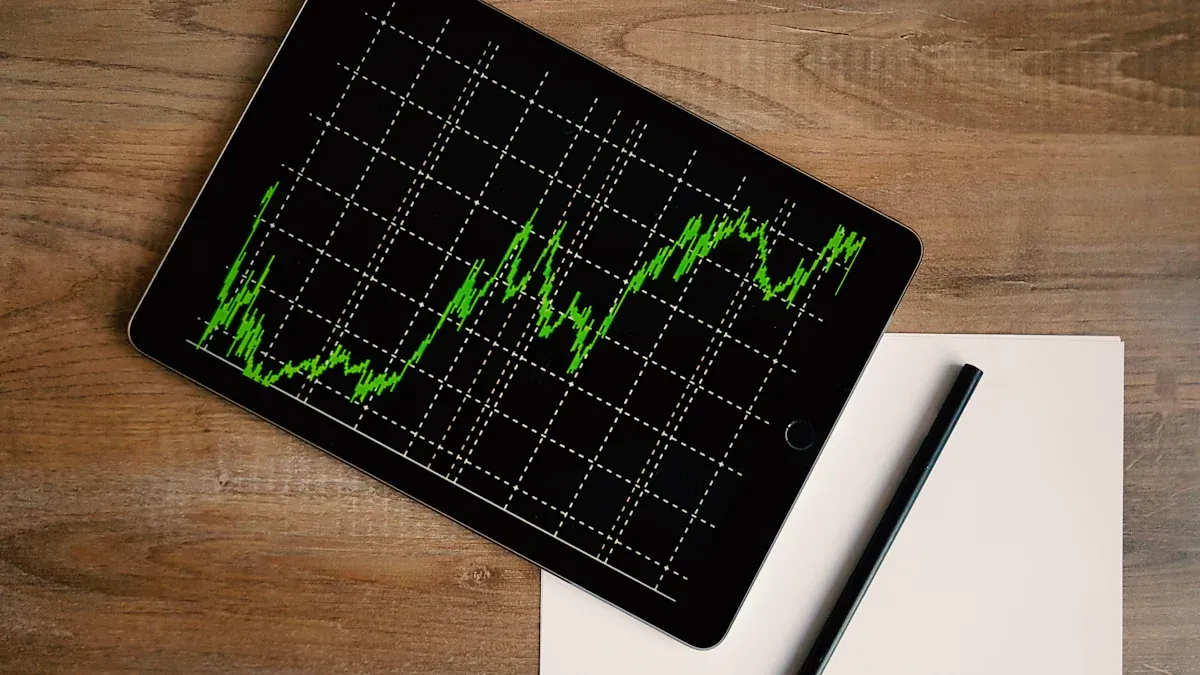
Real-World Cost Example
When you compare rechargeable battery packs, you want to know how much you will spend over time. Imagine you use a device every day for ten years. You need to choose between nimh batteries and lithium-ion batteries. Both types of rechargeable battery packs have different costs and benefits.
If you buy nimh batteries, you pay less at first. A set of nimh batteries costs about $60. These rechargeable batteries last for 500 to 1,000 cycles. Over ten years, you will need to replace nimh batteries three to five times. This means your total cost could reach $180 to $300. You also need to think about the time and effort to change nimh batteries more often.
Lithium-ion batteries cost more at the start. You pay about $100 for a set. These rechargeable batteries last for 2,000 to 3,000 cycles. In ten years, you may only need to buy them once. Your total cost stays at $100. You save money and time because you do not need to replace lithium-ion batteries as often.
If you use your device every day, lithium-ion batteries give you better value. You spend less money and get longer cycle life.
Cost Table
You can see the difference in cost and cycle life in the table below. This table shows how nimh batteries and lithium-ion batteries compare over ten years.
| Battery Type | Cycle Life (Full Charge Cycles) | Initial Cost | Replacement Frequency (10 Years) | Total Cost Over 10 Years |
|---|---|---|---|---|
| NiMH Batteries | 500 to 1,000 | $60 | 3 to 5 | $180 to $300 |
| Lithium-ion Batteries | 2,000 to 3,000 | $100 | 1 | $100 |
You also want to know how users feel about these rechargeable battery packs. Many users say nimh batteries work well for high-drain devices and frequent use. Lithium-ion batteries get high marks for stable voltage and long cycle life. Both types of rechargeable battery packs offer good value, but lithium-ion batteries often win for long-term savings.
Choose nimh batteries for simple, low-cost needs. Pick lithium-ion batteries for devices you use often and want to save money over time.
Use Cases
High-Drain Devices
High-drain devices like cameras and power tools need strong batteries. These devices use a lot of power quickly and need steady voltage. Nimh batteries and lithium-ion batteries both work well here. Nimh batteries keep their voltage steady, even when used a lot. Lithium-ion batteries have more energy and last longer. You can recharge both types many times. This saves money and helps the environment.
Lithium-ion batteries are best for power tools. They have lots of energy and can be charged often. Batteries like the Samsung 25R and Panasonic NCR18650GA are safe and work well. You get good value and long battery life. Custom battery packs with safety circuits make them safer and better.
| Feature | Rechargeable (NiMH & Li-ion) | Disposable Lithium |
|---|---|---|
| Nominal Voltage | NiMH: 1.2V, Li-ion: 1.5V (regulated) | 1.5V |
| Power Delivery | Excellent; high current instantly for responsive use | Excellent; strong, consistent power |
| Voltage Stability | Very stable under load | Very stable throughout lifespan |
| Cost | Higher upfront, low long-term due to reusability | Higher ongoing cost due to replacement |
| Reusability | Hundreds of recharge cycles | Single-use only |
Tip: Pick lithium-ion batteries or nimh batteries for high-drain devices. You get better battery life, safety, and save money over time.
Everyday Rechargeable Batteries
You use rechargeable batteries in things like remotes and flashlights. Nimh batteries are a good choice for these. They cost less at first and work well for a long time. You can recharge nimh batteries many times, so they save money. Lithium-ion batteries last longer and hold more energy, but they cost more.
| Battery Type | Initial Manufacturing Cost (per kWh) | Key Cost-Effectiveness Points |
|---|---|---|
| NiMH | $200 | Lower upfront cost, stable and safe for long-term use |
| Lithium-ion | $350 | Higher upfront cost, higher energy density but more expensive |
Low Self-Discharge nimh batteries are great for home use. They keep their charge longer and need less charging. Nimh batteries are safe and work well. Lithium-ion batteries are good for small devices that need lots of power and long battery life.
Note: For most home devices, nimh batteries give you the best mix of price, safety, and battery life.
Occasional Use
Some devices are only used a few times each year, like emergency flashlights or backup remotes. For these, you want batteries that last a long time on the shelf and need little care. Low Self-Discharge nimh batteries are perfect. They can be stored for months and still work well when needed.
Alkaline batteries are cheap and last a long time unused, but you cannot recharge them. Nimh batteries save money and make less waste over time. Lithium-ion batteries last long and hold lots of energy, but they cost more and are not always needed for rare use.
- For things you use every month or few months, pick LSD nimh batteries. They are safe, ready, and save money.
- For things you use once a year or in emergencies, alkaline batteries work, but LSD nimh batteries are still a good choice.
Tip: Rechargeable nimh batteries with low self-discharge are best for things you use sometimes. They last long, are safe, and cost less over time.
Final Recommendation
Best Choice by Scenario
You want to pick the best battery for your needs. The right battery depends on how you use your devices. It also depends on how often you recharge and what matters most to you. You might care about cost, performance, or safety. Here are some main things to think about:
- High energy density means more power in a smaller battery. Lithium-ion batteries have this, so they are great for robots, laptops, and smartphones.
- Long cycle life lets you recharge your battery many times. Lithium-ion batteries last longer, especially if you use them a lot.
- Lithium-ion batteries have smart systems that watch charging. These systems help keep you safe and make the battery last longer.
- NiMH batteries give steady voltage and work well for high-drain devices. They are good for cameras and game controllers. NiMH batteries can handle overcharging and cost less at first.
- If you need a battery for sometimes use or want to help the planet, NiMH batteries are a good choice. They are better for the environment.
- For devices that need a full 1.5V or where size and weight matter, lithium-ion batteries work better. But you must use the right charger to stay safe.
| Factor | NiMH Batteries | Lithium-ion Batteries (AA/AAA size) |
|---|---|---|
| Nominal Voltage | 1.2V, stays steady even with heavy use | 3.6-3.7V, but gives 1.5V output |
| Power Delivery | Great for strong bursts of power | Gives a steady 1.5V output |
| Voltage Stability | Very steady when used a lot | Keeps 1.5V all the time |
| Cost | Cheaper at first, low cost over time | Costs more at first, needs special charger |
| Reusability | Can be recharged many times | Can be recharged many times |
| Ideal Usage | Good for high-drain, works with 1.2V | Best for devices that need steady voltage |
If you want to save money over time and get top performance, lithium-ion batteries are best for devices you use a lot. If you want simple, safe, and reliable batteries, NiMH batteries are still a great pick.
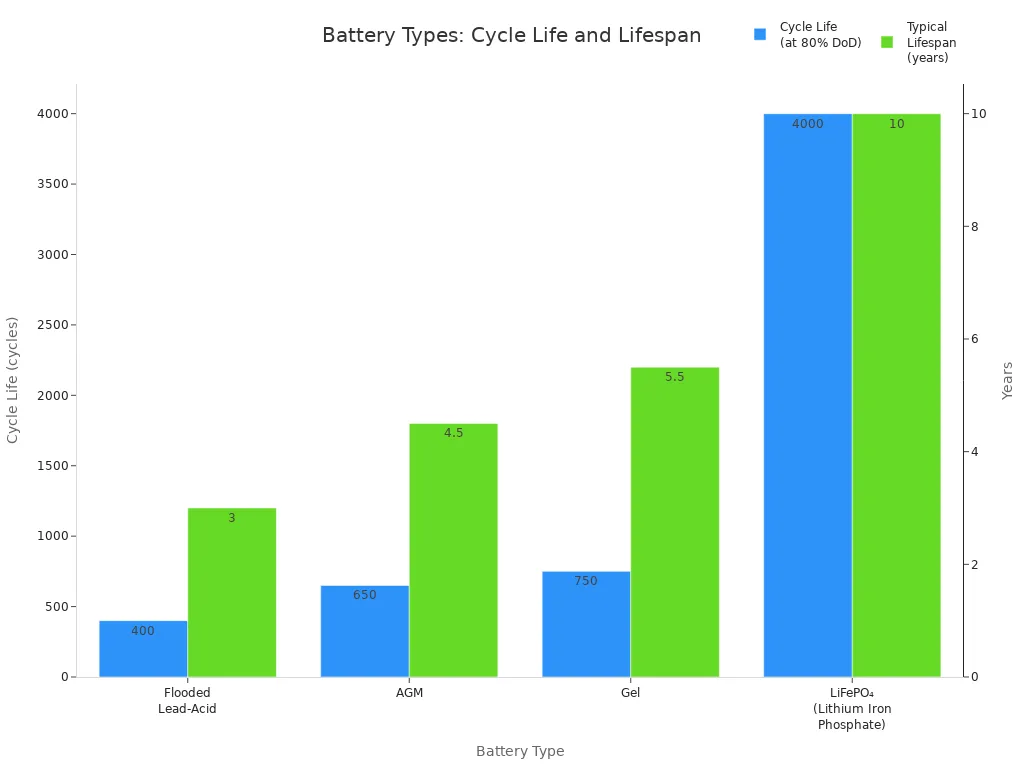
Key Takeaways
- Lithium-ion batteries are lighter, hold more energy, and work better for most new devices. They last longer and need less care, but cost more at first. You also need to follow safety and charging rules.
- NiMH batteries cost less at the start, are very safe, and work in many devices. You can overcharge them and they still last for years if you take care of them.
- If you use your devices a lot, lithium-ion batteries save you money because they last longer and work better.
- NiMH batteries are a good choice if you want to spend less, charge easily, and help the environment.
- Always pick a battery that matches your device’s power needs and charging habits. This helps you get the best value and performance from your rechargeable batteries.
You want a battery that is safe and a good deal. NiMH batteries cost less at first and are easy to charge. They are very safe for most things at home. Lithium-ion batteries cost more money but give more power and last longer. They also charge in a steady way, which is good for things you use a lot. Look at the table below to see how they compare over time:
| Battery Type | Cost-Effectiveness | Safety | Charging Needs |
|---|---|---|---|
| NiMH batteries | High | High | Simple |
| Lithium-ion batteries | High (long-term) | Medium | Special |
Pick nimh batteries if you want to save money and be safe. Choose lithium-ion batteries if you want better performance and longer use.
FAQ
What is the main difference between NiMH and lithium-ion batteries?
NiMH batteries store energy with nickel and metal hydride. Lithium-ion batteries use lithium compounds to store energy. Lithium-ion batteries last longer and hold more energy. NiMH batteries cost less and are safer to use.
Can you use the same charger for both battery types?
You cannot use the same charger for both types. NiMH batteries need a simple charger. Lithium-ion batteries need a smart charger with voltage control. Using the wrong charger can hurt the battery or cause safety problems.
Which battery type is safer for home use?
NiMH batteries are safer for home use. They can handle overcharging and rough use better. Lithium-ion batteries need careful charging and watching. Always follow the maker’s safety rules.
How do you store rechargeable batteries for best results?
Keep batteries in a cool, dry place. Do not put them in sunlight or near heat. Charge them to about half if you will store them for months. This helps the battery stay healthy and last longer.
Do lithium-ion batteries work better in cold weather?
Lithium-ion batteries work better than NiMH in cold weather. They give more steady power and last longer outside. For winter or outdoor use, lithium-ion batteries are the best choice.
-

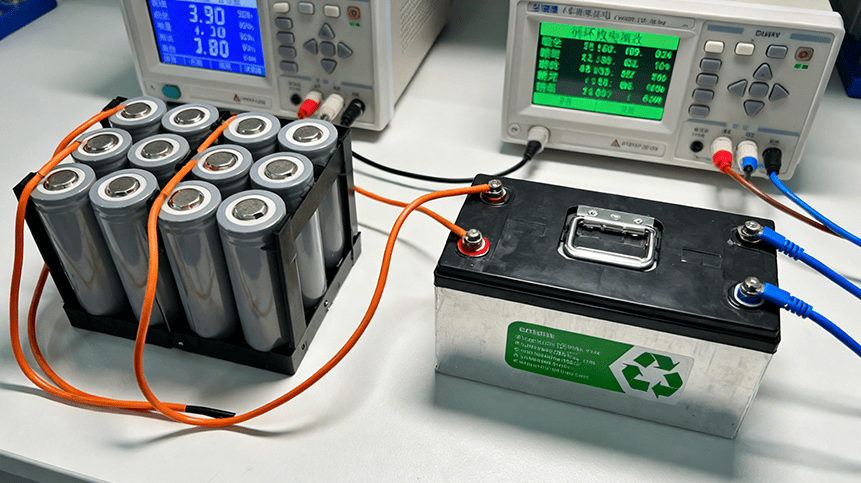 May.2025.11.24Ternary Lithium Battery vs Lithium-ion: Complete Comparison Guide (2025 Edition)Learn More
May.2025.11.24Ternary Lithium Battery vs Lithium-ion: Complete Comparison Guide (2025 Edition)Learn More -

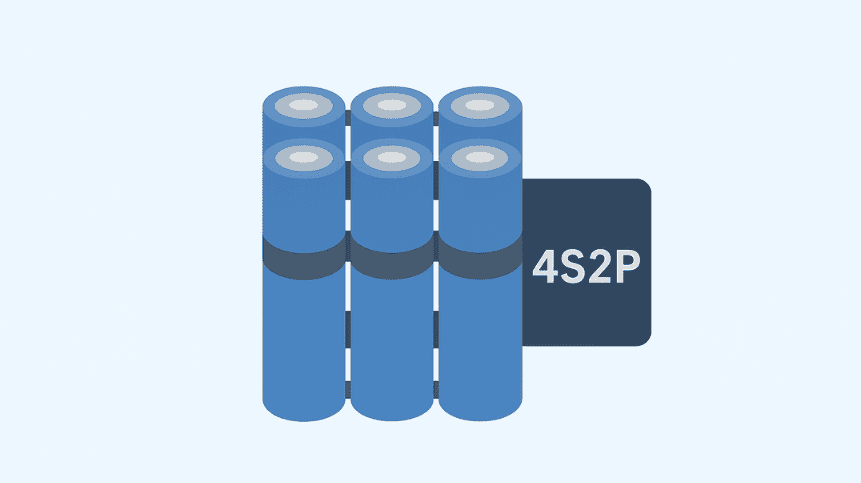 May.2025.11.214S2P 18650 14.8V Battery: Complete Technical Guide, Specs, Applications & SafetyLearn More
May.2025.11.214S2P 18650 14.8V Battery: Complete Technical Guide, Specs, Applications & SafetyLearn More -

 May.2025.11.18PCM vs BMS in Lithium Batteries: What’s the Difference and Which One Do You Need?Learn More
May.2025.11.18PCM vs BMS in Lithium Batteries: What’s the Difference and Which One Do You Need?Learn More -

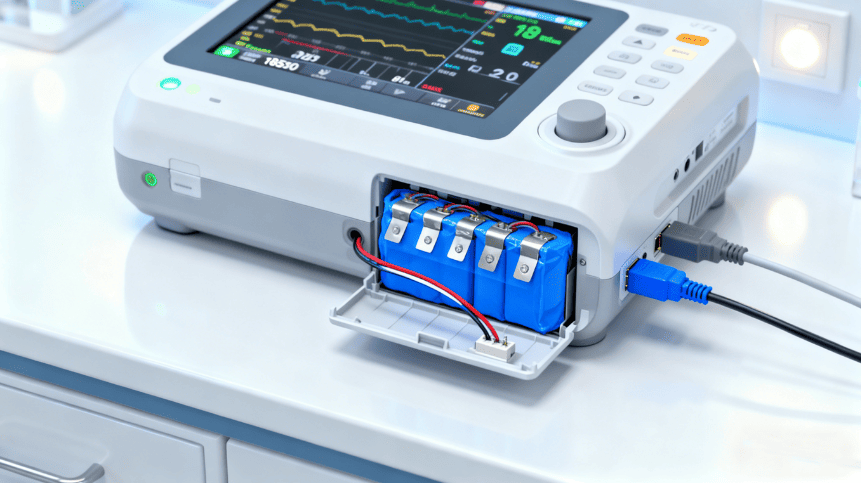 May.2025.11.17Custom Li-ion Battery Design for Medical Devices (2025 Comprehensive Guide)Learn More
May.2025.11.17Custom Li-ion Battery Design for Medical Devices (2025 Comprehensive Guide)Learn More -

 May.2025.11.17The Future of Lithium-Ion Batteries: Innovation, Sustainability, and Global Market TrendsLearn More
May.2025.11.17The Future of Lithium-Ion Batteries: Innovation, Sustainability, and Global Market TrendsLearn More




